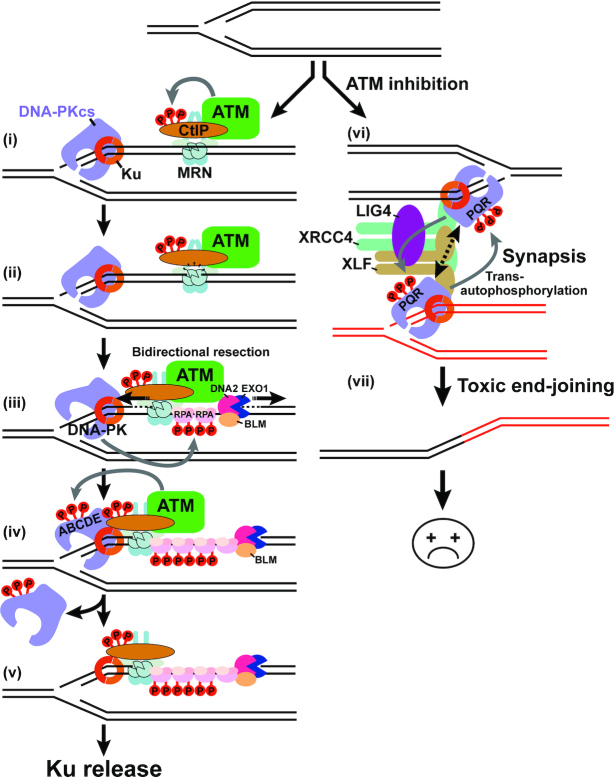Figure 5.
Proposed model for Ku and DNA-PKcs eviction from a single-ended DSB. At a seDSB, Ku loads at the DNA end and MRN associates concomitantly on the break side (i). When efficient, ATM is activated upon binding to MRN; ATM-mediated CtIP phosphorylation activates one DNA-strand nicking by MRE11 (ii), followed by bidirectional resection and RPA loading on the ssDNA gap (iii). DNA-PK is activated upon DNA-PKcs binding to the Ku/DNA end complex and phosphorylates RPA32 (iii). ATM-dependent phosphorylation of DNA-PKcs is necessary for DNA-PKcs release (iv) and for the subsequent eviction of Ku by the combined action of MRE11 exonuclease and CtIP endonuclease activities (v). The precise order of these events remains to be established. Upon ATM inhibition, DNA-PK remains on the breaks ends and together with the XXL (XRCC4-XLF-LIG4) complex, promotes synapsis of two seDSBs concomitantly with DNA-PKcs trans-autophosphoryation (vi) followed by aberrant ligation (vii).

